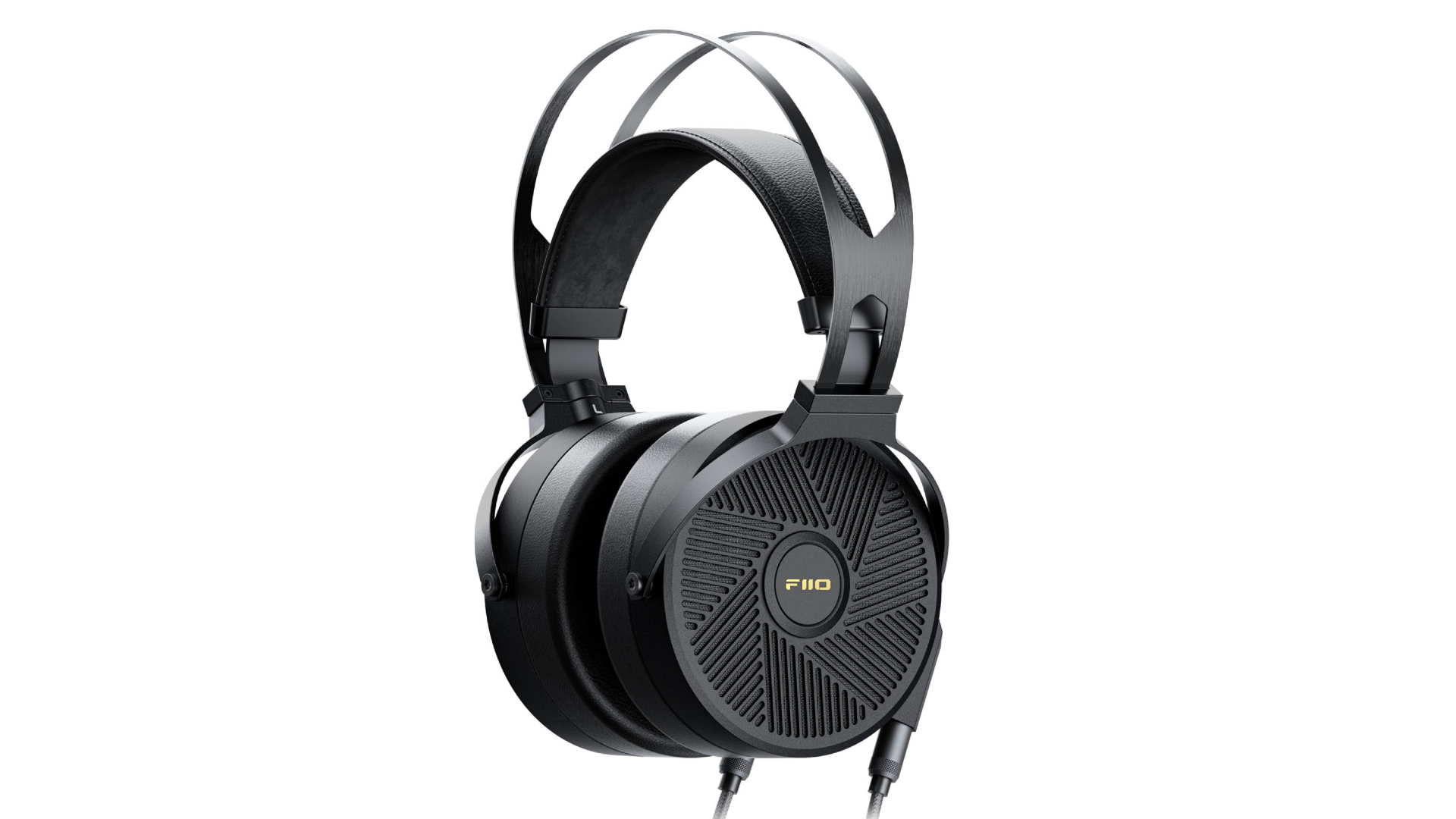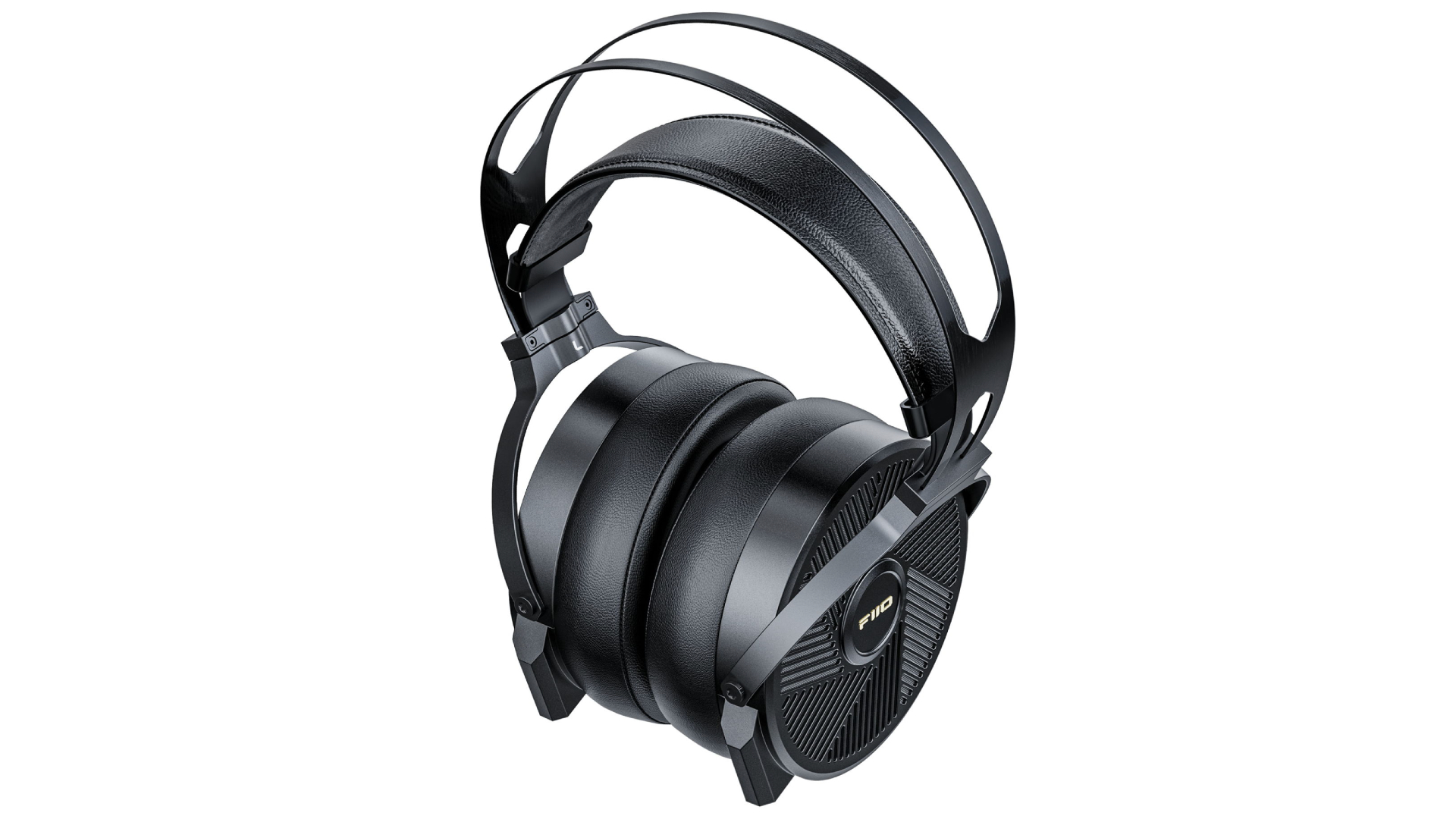Fiio gets up in Grado’s grille with open-back headphones – but these have 90mm drivers
This fighter is 90mm of planar magnetic open-backed Fiio

Fiio's had a splendid year, just see the Chinese audio firm's excellent new FT3 over-ears, BTR7 DAC and M15S hi-res audio player for starters. And now, it's taking the fight to Audeze and Grado by launching its first pair of over-ear open-back planar magnetic headphones.
Not content with its recent rollout of USB-C DACs to level up your shiny new iPhone 15, Fiio is dipping its lower limbs even further into audiophile territory with Fiio FT5, an inaugural pair of wired, open-back headphones toting 90mm planar magnetic drivers.
The keen eyed will note that Audeze did precisely this in April, with the launch of its MM-100 90mm PM headphones, costing $399. Fiio's option? That'll be $499 / £429 (which is around AU$820) but for that you are getting a plethora of audio plugs (3.5mm singled-ended, 4.4mm and XLR balanced), interchangeable suede and leather earpads plus a premium silver-plated monocrystalline copper cable.
Want the quick recap on planar magnetic tech? First off, think flat versus cone. PM drivers use a flat diaphragm, rather than the traditional cone-shaped or dome-shaped membrane favored by their dynamic counterparts. This is then sandwiched between an array of magnets to create an evenly-suspended diaphragm in between permanent magnetic fields. Why is that better? Planar magnetic drivers make the headphones that use them extremely resistant to various types of audio and electronic distortion. When done well, the upshot is more detailed, clearer, better music.
You have to admit, it's getting better…

So let's get granular on how Fiio says it does it better, starting off with the 'nanoscale diaphragm coating process'. Here, the coils of the driver are printed onto the diaphragm using high-end technology from the semiconductor industry.
This promotes a more consistent thickness and weight distribution. Why do we want that? To generate (as you might have guessed) a more consistent and accurate sound.
Following extensive testing, FiiO's engineering team has designed the FT5 with 20 N52 neodymium magnets per driver too (yes, 20). 11 magnets are placed on the inside of the FT5’s planar magnetic driver and 9 magnets are placed on the outside – leading to 20 magnets per channel and 40 in total for the entire headphone. The balanced placement of magnets apparently ensures the aluminum alloy coils are evenly distributed in the magnetic field, and it also allows the driver diaphragm to be balanced between the forces of the inner and outer magnets – ergo, consistent movement of the driver and reduced distortion, for a higher fidelity sound.
Fiio says one of the things it wanted to achieve with its first pair of PM headphones is high sensitivity while staying easy to power. To backtrack, planar magnetic headphones traditionally feature low-sensitivity, meaning they're hard to drive – so a desktop headphone amplifier or at least one of the best portable DACs is required to drive these multi-magnet cans to their full potential.
Ah, but the FT5 is not like a traditional planar magnetic headphone. Thanks to the high magnetic density of those 20 neodynium magnets (up to 1.5T), the 6μm thin diaphragm and that nano-level aluminum alloy coating technology, the FT5’s driver promises both lightness and strength, allowing for a high sensitivity of 110dB/1Vrms@1kHz i.e. 96dB/mW@1kHz. And if those are just numbers it's OK; what Fiio's saying is that the FT5 can be easily driven by the best portable hi-res audio players.
Sign up for breaking news, reviews, opinion, top tech deals, and more.
The FT5 is also open-backed and here, Fiio says the rear of the driver housing is carefully designed to act as a baffle (like the front of a speaker) to isolate sound waves in the front and rear of the driver housing. Furthermore, the grille of the FT5 is scientifically designed to control and precisely accelerate the air flow when the driver is moving. The claim is treble resolution unmatched by dynamic driver headphones, plus a wide and vast soundstage to better immerse you in the symphony.
Intriguing stuff, no? And even at a slight price-hike over the aforementioned MM-100, Californian specialist (and new PlayStation brand, but don't let that worry you) Audeze might want to take a look at the new headphone hotness – as will UK open-back headphones specialist, Grado. Our best wired headphones guide is always looking for new entries…
You might also like

Becky became Audio Editor at TechRadar in 2024, but joined the team in 2022 as Senior Staff Writer, focusing on all things hi-fi. Before this, she spent three years at What Hi-Fi? testing and reviewing everything from wallet-friendly wireless earbuds to huge high-end sound systems. Prior to gaining her MA in Journalism in 2018, Becky freelanced as an arts critic alongside a 22-year career as a professional dancer and aerialist – any love of dance starts with a love of music. Becky has previously contributed to Stuff, FourFourTwo and The Stage. When not writing, she can still be found throwing shapes in a dance studio, these days with varying degrees of success.